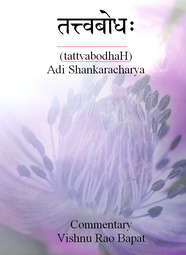Mantra 3
*** Read Part 3 ***
जाग्रितस्थानो भिष्प्रज्ञः सप्ताङ्ग एकोन्विंश्तिमुखः स्थूलभुग्वैश्वानरः प्रथमः पादः॥ ३॥
jAgaritasthAno bahiShpraj~naH saptA~Nga ekonaviMshatimukhaH sthUlabhugvaishvAnaraH prathamaH pAdaH || 3 ||
prathamaH pAdaH – The first aspect (of the Self)
vaishvAnara – is vaishvAnara (or vishva)
jAgaritasthAna – (This is) the waking state
praj~na – (and it is one in which one’s) knowing awareness
bahis – (is) turned outwards
sapta a~Nga (a~Nga literally means ‘limb’) – (This aspect has) seven divisions ekonaviMshatimukhaH – and nineteen interfaces (with the outside world) (viMshati is ‘twenty’ and ekona is ‘one less than’; mukha literally means ‘mouth’ or ‘opening’)
sthUlabhugvaishvAnaraH – vaishvAnara (is) the enjoyer (bhug = bhuj = bhoktA; experiencer, enjoyer) of the gross world.
The first aspect of the Self is vaishvAnara. This is the waking state in which one’s awareness is turned outwards to the external world. vaishvAnara has seven parts and experiences the universe via 19 interfaces.
Continue reading
